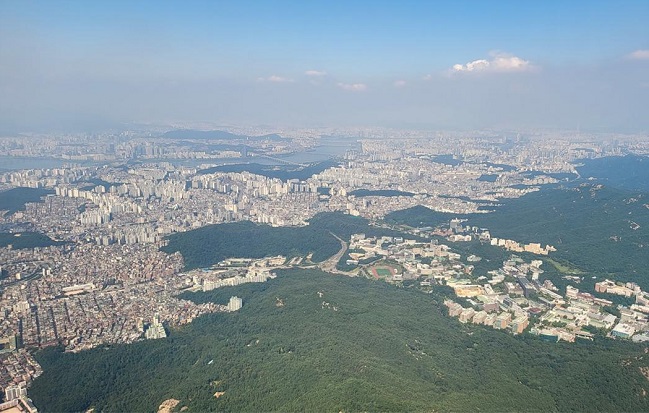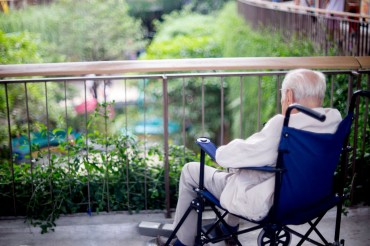
An urban forest in southern Seoul is seen in this photo provided by the National Institute of Forest Science.
DAEJEON, Oct. 1 (Korea Bizwire) — Urban areas with more green spaces have a lower level of microplastics, research showed Thursday.
A joint research team consisting of the National Institute of Forest Science, Seoul National University and anti-pests company Cesco, analyzed the quantity and composition of microplastics (diameter of higher than 20 micrometers, equivalent to the thickness of wool) after collecting air samples at three fine dust measuring sites in forested areas.
In light of the average amount of microplastics detected per day, Seoullo 7017, an overpass-turned-walkway in central Seoul, ranked first with 1.21 per cubic meter, followed by the Cheongnyangni traffic island at 1.09 and Hongneung Forest at 0.79.
Green infrastructure (forest and grassland) accounted for 40.2 percent of the area within a two kilometer radius of the measuring site in Hongneung Forest, far higher than the 10.9 percent for the Cheongnyangni traffic island and 9.9 percent for Seoullo 7017.
This can be interpreted as an indication that urban forests that have great fine dust and heat wave-reducing effect have the potential to limit the dispersion of microplastics.
Among the microplastics detected in the air, polypropylene, which is typically used in disposable containers and synthetic fibers, accounted for the largest share at 59 percent.
It is estimated that the polypropylene became airborne through the processes of plastic corrosion and photo degradation.
J. S. Shin (js_shin@koreabizwire.com)






